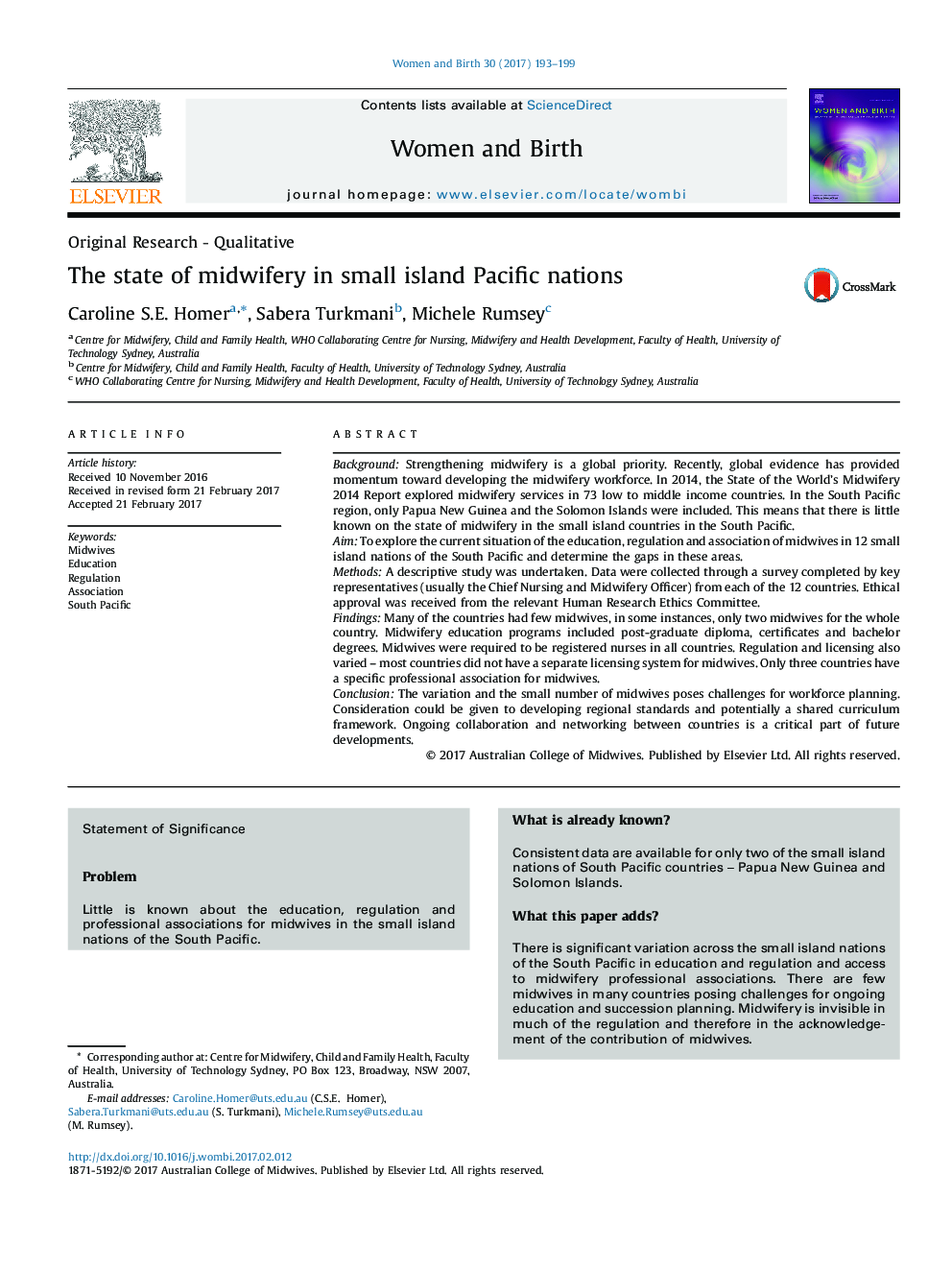| Article ID | Journal | Published Year | Pages | File Type |
|---|---|---|---|---|
| 5566065 | Women and Birth | 2017 | 7 Pages |
â¢Women and newborns across the small island nations of the Pacific region also need access to midwifery services and care.â¢Many small island Pacific nations face challenges due to small populations and limited educational and career opportunities.â¢A regional approach to midwifery education, regulation and association may assist ongoing development of the profession.â¢A stronger visibility of midwives in education, regulation and association may assist in the provision of quality care.
BackgroundStrengthening midwifery is a global priority. Recently, global evidence has provided momentum toward developing the midwifery workforce. In 2014, the State of the World's Midwifery 2014 Report explored midwifery services in 73 low to middle income countries. In the South Pacific region, only Papua New Guinea and the Solomon Islands were included. This means that there is little known on the state of midwifery in the small island countries in the South Pacific.AimTo explore the current situation of the education, regulation and association of midwives in 12 small island nations of the South Pacific and determine the gaps in these areas.MethodsA descriptive study was undertaken. Data were collected through a survey completed by key representatives (usually the Chief Nursing and Midwifery Officer) from each of the 12 countries. Ethical approval was received from the relevant Human Research Ethics Committee.FindingsMany of the countries had few midwives, in some instances, only two midwives for the whole country. Midwifery education programs included post-graduate diploma, certificates and bachelor degrees. Midwives were required to be registered nurses in all countries. Regulation and licensing also varied - most countries did not have a separate licensing system for midwives. Only three countries have a specific professional association for midwives.ConclusionThe variation and the small number of midwives poses challenges for workforce planning. Consideration could be given to developing regional standards and potentially a shared curriculum framework. Ongoing collaboration and networking between countries is a critical part of future developments.
